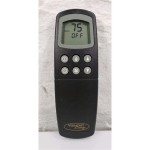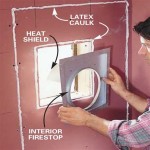Electronic Ignition For Gas Fireplace
Electronic ignition systems represent a significant advancement in gas fireplace technology, offering convenience, safety, and efficiency compared to older, manual ignition methods like pilot lights. The use of electronic ignition has become increasingly prevalent in modern gas fireplaces due to its numerous advantages. This article will explore the workings, benefits, types, and common issues associated with electronic ignition systems in gas fireplaces.
Traditionally, gas fireplaces relied on a standing pilot light, a small, continuously burning flame that ignited the main burner when needed. While simple in design, pilot lights consume a considerable amount of gas over time, even when the fireplace is not in use. They also pose a potential safety risk if the flame is extinguished due to drafts or other disturbances, potentially leading to gas accumulation. Electronic ignition systems address these drawbacks by eliminating the need for a constantly burning pilot light, igniting the gas only when the fireplace is activated.
How Electronic Ignition Works
Electronic ignition systems use a high-voltage spark to ignite the gas flowing to the main burner. This process is typically controlled by an electronic module or control board that monitors various parameters and ensures safe and reliable ignition. The system generally includes the following components:
Ignition Module (Control Board): This is the central processing unit of the electronic ignition system. It receives signals from the thermostat or remote control, monitors safety sensors, and controls the spark generator and gas valve. The module is programmed to perform a specific sequence of operations during the ignition process.
Spark Generator: The spark generator, also known as an igniter, produces the high-voltage spark needed to ignite the gas. It receives a signal from the ignition module and generates a series of sparks near the burner. There are different types of spark generators, including spark electrodes and hot surface igniters, which will be described later.
Flame Sensor: The flame sensor detects the presence of a flame after ignition. It is a critical safety component that ensures the gas valve closes if the flame is not detected within a specific timeframe. This prevents the accumulation of unburned gas in the fireplace or surrounding area. Common types of flame sensors include thermocouples, thermopiles, and flame rectification sensors.
Gas Valve: The gas valve controls the flow of gas to the main burner. It is an electrically operated valve that opens when the ignition module signals it to do so. The gas valve is typically a solenoid valve, which uses an electromagnetic coil to control the valve opening and closing.
Thermostat or Remote Control: These devices allow the user to control the fireplace. They send a signal to the ignition module to initiate the ignition process. The thermostat maintains the desired room temperature by cycling the fireplace on and off as needed. Remote controls offer convenience and flexibility, allowing the user to operate the fireplace from a distance.
The ignition sequence typically unfolds as follows: When the thermostat or remote control signals the fireplace to turn on, the ignition module opens the gas valve and activates the spark generator. The spark generator produces a series of sparks near the burner, igniting the gas. The flame sensor detects the presence of a flame and sends a signal back to the ignition module. The ignition module then keeps the gas valve open, allowing the fireplace to continue burning. If the flame sensor does not detect a flame within a specific timeframe, the ignition module closes the gas valve, preventing the release of unburned gas.
Benefits of Electronic Ignition
Electronic ignition offers several advantages over traditional pilot light systems:
Energy Efficiency: By eliminating the standing pilot light, electronic ignition significantly reduces gas consumption. This can result in lower energy bills and a smaller carbon footprint. The savings can be substantial over the lifespan of the fireplace.
Safety: Electronic ignition systems incorporate multiple safety features, such as flame sensors, to prevent gas leaks and explosions. If the flame is extinguished for any reason, the gas valve automatically shuts off, preventing the accumulation of unburned gas.
Convenience: Electronic ignition systems can be easily controlled with a thermostat or remote control, offering greater convenience and flexibility. Users can adjust the temperature or turn the fireplace on and off from a distance. Some systems also offer programmable timers and other advanced features.
Reliability: Modern electronic ignition systems are designed to be highly reliable, with components that are built to withstand the harsh conditions inside a fireplace. They are less susceptible to problems caused by drafts, dust, or other environmental factors.
Reduced Maintenance: Because there is no pilot light to clean or adjust, electronic ignition systems require less maintenance than traditional systems. This can save time and money in the long run.
Types of Electronic Ignition Systems
Several types of electronic ignition systems are used in gas fireplaces, each with its own characteristics and advantages:
Intermittent Pilot Ignition (IPI): IPI systems use an electronic spark to ignite a small pilot flame only when the fireplace is turned on. Once the pilot flame is established, it ignites the main burner. This type of system offers a balance between energy efficiency and reliability. It's more energy efficient than a standing pilot but less so than Direct Spark Ignition.
Direct Spark Ignition (DSI): DSI systems use an electronic spark to directly ignite the main burner, eliminating the need for a pilot light altogether. This is the most energy-efficient type of electronic ignition. DSI systems are commonly found in newer, high-efficiency gas fireplaces.
Hot Surface Ignition (HSI): HSI systems use a silicon carbide or similar material that heats up rapidly when electricity is applied. The hot surface ignites the gas flowing to the main burner. HSI systems are known for their reliability and long lifespan. They are often used in high-end gas fireplaces.
Power Vent Ignition: This system is often used in fireplaces that require a powered vent to expel exhaust gases. The ignition system is integrated with the power vent to ensure proper ventilation and safe operation. These systems often have additional safety features to monitor the vent system's performance.
The choice of ignition system depends on various factors, including the fireplace design, energy efficiency requirements, and cost considerations. DSI systems are typically preferred for their energy efficiency, while HSI systems are favored for their reliability and longevity.
Common Issues and Troubleshooting
While electronic ignition systems are generally reliable, they can occasionally experience problems. Some common issues include:
Failure to Ignite: This can be caused by a variety of factors, including a faulty spark generator, a clogged burner, a low gas supply, or a malfunctioning ignition module. Check the spark generator for proper spark, clean the burner if necessary, and ensure the gas supply is adequate. If the problem persists, the ignition module may need to be replaced.
Flame Sensor Problems: A dirty or faulty flame sensor can prevent the fireplace from staying lit. Clean the flame sensor with a fine-grit sandpaper or steel wool. If the problem continues, the flame sensor may need to be replaced. It's critical to verify the flame sensor's position relative to the flame.
Intermittent Operation: This can be caused by loose wiring, a faulty thermostat or remote control, or a malfunctioning ignition module. Check all wiring connections and ensure they are secure. Test the thermostat or remote control to ensure it is sending the correct signals. If the problem persists, the ignition module may be the culprit.
Pilot Light (for IPI systems) Goes Out: In IPI systems, the pilot light may extinguish due to drafts, low gas pressure, or a dirty pilot orifice. Check for drafts and address any ventilation issues. Ensure the gas pressure is within the specified range. Clean the pilot orifice with a small wire or compressed air.
Unusual Noises: Clicking or popping sounds can indicate a problem with the spark generator or ignition module. Inspect the spark generator for damage or corrosion. Replace the ignition module if necessary.
Troubleshooting electronic ignition systems can be complex and may require specialized tools and knowledge. If you are not comfortable working with gas or electrical components, it is best to consult a qualified technician. Always follow safety precautions when working on gas appliances.
Regular maintenance, such as cleaning the burner and flame sensor, can help prevent problems and ensure the reliable operation of the electronic ignition system. Consult the manufacturer's instructions for specific maintenance recommendations.

Electronic Ignition Gas Fireplace Valve Kit Firepit Outfitter Fire Pit

Electronic Ignition

Fireplace Millivolt Electronic Ignition Valve Kit For Use With A Wall Switch 82k Btu

Fireplace Millivolt Honeywell Electronic Ignition Valve Kit For Use With A Wall Switch 150k Btu

How Electronic Ignition Ipi Fireplaces Work

Superior 36 Inch Electronic Ignition Vent Free Outdoor Gas Fireplace With Remote Vre3236

Hpc Fire Lbof Electronic Ignition Outdoor Gas Fireplace Burner Kit

Napoleon B46ntre Ascent Series Electronic Ignition Direct Vent Gas Fireplace

Elevation 36 Direct Vent Fireplace Natural Gas Electronic Ignition

Empire Outdoor 36 Inch Stainless Steel Electronic Ignition Fireplace With Logs Op36fb2mf Olx24wr Oni24 Hvacdirect Com








